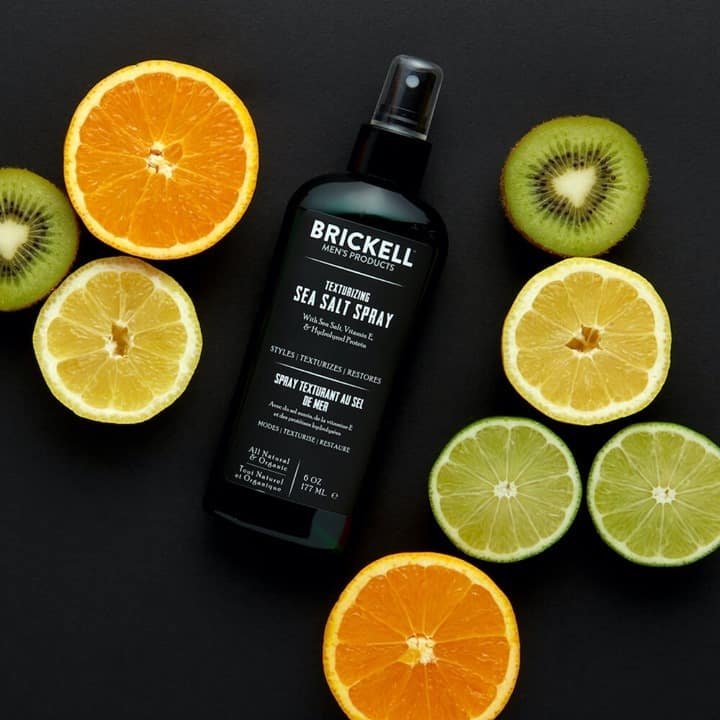Are Certain Nail Shapes More Likely to Break Than Others? A Nail Expert Weighs In

Introduction
In this article, we will explore the world of nail shapes and how they can affect breakage. Have you ever wondered if certain nail shapes are more likely to break than others? Well, you’re in the right place! We’ll look at the science behind nail breakage and share expert tips on how to prevent it.
Understanding Nail Shapes
Before we dive in, let’s take a moment to understand the different nail shapes we’ll be talking about:
- Square: characterized by straight edges and a flat top surface.
- Coffin: similar to square nails, but with tapered and rounded edges.
- Round: nails that follow the natural curve of the fingertip.
- Oval: an elongated version of round nails with soft curves.
- Squoval: a combination of square and oval, featuring straight edges with rounded corners.
- Almond: tapered sides that come to a point at the end, resembling an almond shape.
Now that we’re familiar with each shape, let’s find out why some nails are more prone to breaking than others. This knowledge will help us make better choices when it comes to our own nail shapes.
But before we dig into the details, here’s a sneak peek: our expert nail technician has revealed that one particular nail shape is highly resistant to breakage. Keep reading to discover which one it is!
The Connection Between Nail Shapes and Breakage Risk
In this section, we’ll take a close look at how the shape of a nail can affect its strength and likelihood of breaking.
Understanding Nail Shapes and Their Impact on Breakage
When it comes to nail shapes, there are several options to choose from, each with its own unique characteristics. The shape of your nails not only determines the overall aesthetic appeal but can also influence their strength and susceptibility to breakage. In this section, we will explain each nail shape in detail and discuss how it can affect the likelihood of breakage.
Square Nails
Square nails have a straight edge across the tip, resembling a square or rectangle. This shape:
- Provides a broad surface area, making it easier to apply polish evenly
- However, square nails are more prone to breakage due to their sharp corners
- The edges can catch on objects or get snagged, leading to chipping or even complete nail breakage
Coffin Nails
Coffin nails, also known as ballerina nails, are an elongated version of square nails with tapered ends. This shape:
- Has gained popularity in recent years for its edgy and glamorous appearance
- However, similar to square nails, coffin nails have straight edges that make them susceptible to breakage
- The elongated shape increases the leverage on the nail, making them more prone to snapping or cracking. You can learn more about how to maintain artificial coffin nails here.
Round Nails
Round nails have a gentle curve at the tip, resembling the natural shape of the fingertip. This classic and timeless nail shape:
- Is less likely to break compared to square or coffin nails
- The absence of sharp edges reduces the risk of snagging and catching on objects
- Additionally, the curved shape distributes tension more evenly along the nail bed, minimizing stress concentration points that could lead to breakage. You can find a comprehensive guide on how to file round nails properly here.
Oval Nails
Oval nails are similar to round nails but have a slightly more elongated shape. This elegant and feminine nail shape:
- Is considered one of the most versatile options
- Like round nails, oval-shaped nails distribute tension evenly due to their curved edge
- This helps to reduce the risk of breakage and promotes overall nail strength.
Squoval Nails
Squoval nails combine the best of both square and oval shapes, featuring straight edges with rounded corners. This hybrid shape offers:
- The benefits of a wider surface area for polish application
- While reducing the risk of breakage associated with sharp corners
- Squoval nails strike a balance between durability and aesthetics, making them a popular choice among many individuals. For more information on different nail shapes, you can refer to this guide on nail shapes.
Almond Nails
Almond nails are tapered with a pointed tip, resembling the shape of an almond. This nail shape:
- Creates an illusion of elongated fingers and is often associated with elegance and sophistication
- While almond nails may appear delicate, they can actually be quite strong if properly maintained
- The tapered point reduces stress concentration at the tip, minimizing the risk of breakage. If you’re interested in achieving the perfect nail shape, this [guide to perfecting nail shape](https://www.ellamila
Why Certain Nail Shapes Are More Prone to Breakage: The Science Explained
When it comes to understanding why certain nail shapes are more prone to breakage, it’s essential to delve into the science behind the structure of nails and how different shapes can impact their overall strength. However, it’s not just the shape that influences nail breakage, but also genetic factors that determine the natural nail shape of an individual.
The Structure of Nails
A nail is made up of layers that work together to provide strength and protection. Here’s a breakdown of its structure:
- Nail plate: This is the hard, transparent outer layer made of keratin that covers your fingertips.
- Nail bed: Located beneath the nail plate, the nail bed contains blood vessels and nerves that are crucial for nourishing the nails.
- Cuticle: The cuticle forms a protective seal at the base of the nails, guarding them against bacteria and infection.
Understanding this structure is key to understanding why some nail shapes are more prone to breaking than others.
How Nail Shapes Affect Breakage
The way a nail is shaped can affect how it handles stress and pressure. Here’s how different nail shapes distribute tension:
- Straight-edge shapes (such as square and coffin nails): These shapes tend to concentrate tension along their edges, making them more vulnerable to breaks. Additionally, some individuals have a genetic predisposition towards certain nail shapes, which could also impact their susceptibility to breakage.
- Curved-edge shapes (like round, oval, squoval, and almond nails): These shapes distribute tension more evenly across the entire nail, providing better resistance against breakage.
Why Straight-Edge Shapes Break More Easily
Straight-edge shapes have defined edges that create focal points for stress. This increases the likelihood of cracks and breaks in those areas. In fact, some individuals may experience their nails breaking from the sides after they’ve grown long due to these stress points, which may require them to cut their nails whole and regrow them. Understanding this issue can help explore preventative measures, such as maintaining a suitable nail length and considering alternative nail shapes that distribute tension more evenly.
Why Curved-Edge Shapes Are More Resilient
On the other hand, curved-edge shapes disperse tension more uniformly along their contours. This reduces the risk of concentrated pressure spots that can lead to breakage.
By understanding these dynamics, we can see how nail shape plays a crucial role in determining their susceptibility to breakage. However, it’s important to note that individual differences including genetics and other factors can also contribute to this phenomenon, so it’s always best to find a balance between style and strength when choosing your nail shape.
The Nail Expert’s Perspective on Nail Shapes and Breakage Risk
Introducing the Nail Expert
Meet [Nail Expert’s Name], a seasoned nail technician with over 15 years of experience in the beauty industry. They have worked extensively in providing professional nail care services, conducting workshops, and contributing to beauty publications. With their deep knowledge of nail health and aesthetics, [Nail Expert’s Name] has gained valuable insights into how different nail shapes can affect the likelihood of breakage.
Understanding Nail Shapes and Breakage Risk
According to [Nail Expert’s Name], certain nail shapes are indeed more prone to breaking than others. Their professional experience supports the idea that square- and coffin-shaped nails are structurally weaker and therefore more susceptible to breakage. However, [Nail Expert’s Name] also challenges the common belief that curved-edge shapes (round, oval, squoval, almond) are always stronger and less likely to break.
The Science Behind Nail Structure and Breakage
Using their knowledge of nail anatomy and how stress is distributed, [Nail Expert’s Name] explains why they hold this perspective. They point out that while straight-edge shapes may experience concentrated pressure along their edges, curved-edge shapes can still be prone to breakage if not properly cared for. This insight highlights the importance of overall nail maintenance in reducing the risk of breakage, regardless of the chosen nail shape.
Combining Experience and Science for a Comprehensive View
By combining their practical experience with scientific understanding, [Nail Expert’s Name] offers a well-rounded perspective on how nail shapes interact with external factors and internal strength, ultimately affecting their likelihood of breaking.
Remember, having strong and beautiful nails is not just about choosing a specific shape; it requires consistent care and attention tailored to your individual nails.
Maintaining Strong and Beautiful Nails: Tips for Preventing Breakage
To minimize the risk of nail breakage, it’s important to focus on overall nail care, not just the shape. Here are some preventive measures you can take to maintain strong and beautiful nails:
- Moisturize with Cuticle Oil or Serum: Regularly moisturizing your nails and cuticles is essential for enhancing nail flexibility and preventing dryness. Use a nourishing cuticle oil or serum daily to keep your nails hydrated and healthy.
- Avoid Excessive Buffing: While buffing can give your nails a smooth and polished look, excessive buffing can thin out the nails, making them more susceptible to breakage. Limit buffing to once every two weeks or opt for gentle buffing techniques.
- Protect Your Nails: Wear gloves when performing household chores or any activity that involves exposure to water, harsh chemicals, or prolonged contact with moisture. This will help protect your nails from damage and minimize the risk of breakage.
- Use a High-Quality Nail Strengthener: If your nails are particularly weak or prone to breakage, consider using a high-quality nail strengthener product. These products usually contain ingredients like keratin, calcium, and vitamins that help strengthen the nails and reduce breakage.
- File Your Nails Properly: When filing your nails, it’s important to use a gentle motion in one direction rather than sawing back and forth. This helps prevent splitting and weakening of the nails. Additionally, avoid filing your nails too short as this can make them more vulnerable to breaks.
- Maintain a Balanced Diet: A healthy diet rich in vitamins, minerals, and protein is essential for strong and resilient nails. Include foods like lean meats, fish, dairy products, fruits, vegetables, and whole grains in your diet to promote nail health.
- Avoid Nail Biting: Nail biting not only damages the nails but also weakens them, making them more prone to breakage. If you struggle with nail biting, consider using products like bitter-tasting nail polish or seeking professional help to break the habit.
Remember, preventing nail breakage goes beyond just choosing the right shape. By following these tips and maintaining a consistent nail care routine, you can minimize the risk of breakage and keep your nails strong and beautiful.
The Most Resistant Nail Shape: Final Verdict
When it comes to nail shapes, there is no one-size-fits-all answer to which shape is the most breakage-resistant. However, based on the experience and knowledge of our nail expert, we can provide some insights into the nail shapes that tend to be more resistant to breakage. It’s important to note that these are general observations and individual experiences may vary.
According to our nail expert, round, oval, squoval, and almond-shaped nails are often considered more resistant to breakage compared to square or coffin-shaped nails. Here’s why:
- Round: Round nails have curved edges that distribute tension more evenly across the entire nail. This balanced distribution of stress reduces the likelihood of breaks or cracks.
- Oval: Like round nails, oval-shaped nails have curved edges that help distribute tension evenly. The elongated shape provides some added strength while maintaining a natural look.
- Squoval: As the name suggests, squoval nails combine the characteristics of both square and oval shapes. The straighter sides provide some stability, while the rounded edges help distribute tension more evenly.
- Almond: Almond-shaped nails taper towards a rounded point, which helps reduce stress concentration at the tips. This shape is often favored for its elegant appearance and added strength.
It’s important to remember that individual lifestyle factors and nail care routines also play a significant role in preventing breakage. While these nail shapes may offer some resistance to breakage, it’s crucial to prioritize overall nail care to maintain strong and healthy nails.
Ultimately, when choosing a nail shape, consider your personal preferences and what makes you feel confident and comfortable. Experimenting with different shapes can help you find the perfect balance between aesthetics and durability.
Remember, no matter which shape you choose, taking care of your nails with regular moisturization, avoiding excessive buffing, and using high-quality nail products will go a long way in preventing breakage and maintaining beautiful nails.
Conclusion
Maintaining healthy and beautiful nails is an important part of taking care of yourself. Understanding how different nail shapes can affect breakage and following expert advice can help make your nails stronger.
Here are some key tips to remember:
- Moisturize regularly: Use cuticle oil or serum to keep your nails hydrated and prevent them from becoming brittle.
- Be gentle when buffing: Excessive buffing can make your nails thin and prone to breaking, so it’s best to avoid doing it too often.
- Use a good nail strengthener: Look for a high-quality product that can provide extra support in keeping your nails strong.
While certain nail shapes may be less likely to break, it’s important to choose one that you like and feel comfortable with. Confidence should always be the main factor in deciding on a nail shape.
By following these tips and making them part of your regular nail care routine, you can have nails that not only look good but are also strong and resilient. Thank you for reading this article and learning about the science behind nail shapes and breakage.
Stay tuned for more articles on nail care and grooming where we will share more expert advice and practical tips.










